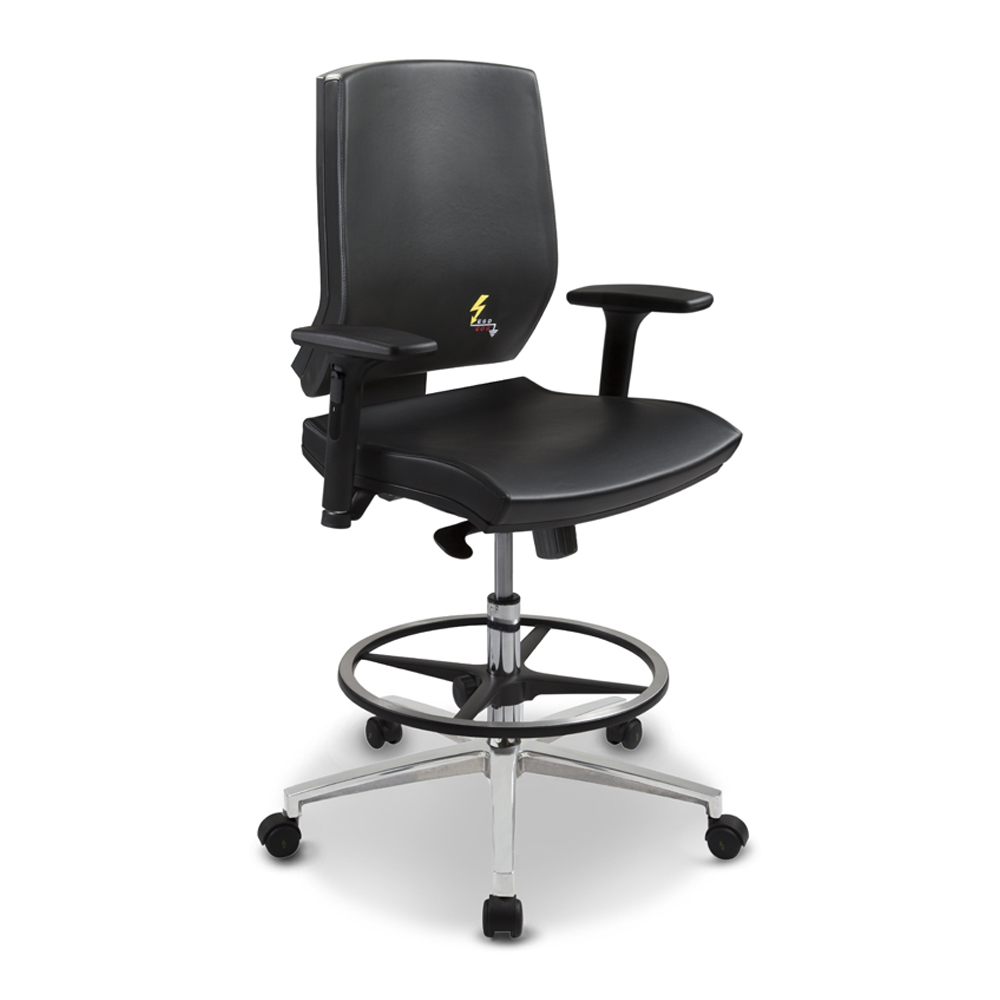The work environments are not all the same. Today we see in particular the case of operators working in the electronic sector and in all controlled static electricity environments, which need to adapt to ESD issues to protect sensitive components and comply with current regulations, such as IEC 61340 5 – 1
But what is ESD? This is an electrical discharge that occurs when there is a transfer of static electricity from one object to another. Static electricity is normally produced when insulating materials are rubbed in a dry environment and it is a type of electricity that can reach very high voltage values, putting the health of operators, equipment and production processes at risk.
Cases of production of electric charge are for example: footsteps on synthetic floors, contact rubbing on synthetic garments, and much more.
If materials are capable of conducting electricity, the charges will be dissipated and eventually discharged to the ground. If this does not happen and the charges are separated faster than the material can dissipate, a certain electrostatic charge accumulates in the body: high electrical voltages can occur, with very harmful effects.
Grendene, through Gref department, has the strong mission to promote and guarantee safety for people exposed to electrostatic discharges, then produces antistatic E.S.D. chairs and stools suitable to be used in EPA areas (protected areas), in total compliance with IEC 61340-5-1 international standard.
These products are engineered and manufactured with materials with antistatic properties of the latest generation, built specifically for use in specific industrial environments with controlled static electricity such as: electronics, chemistry, pharmaceutical, healthcare, plastics, textiles.
Chairs are a dissipative vehicle for electrostatic charges and they are essential and irreplaceable compared to all antistatic equipment, since they perform a dual function:
– They prevent the generation of electrostatic charges on the sitting person’s body.
– They guarantee the grounding connection to the floor discharging the static electricity that may accumulate on the person body.

Safety devices for work environments
Let’s take a closer look at the characteristics of an EPA protected area, ie the handling of components sensitive to static electricity. The EPA areas must be identified and reported. It is known that the main source of electrostatic charges are the operators themselves. It is therefore necessary to use, within these areas, materials that have less tendency to generate charges, grounding systems to ensure that operators and any other conductor are at the same potential.
The earthing devices of an operator are:
- Bracelets. They are the most used ones because they effectively dissipate the electrostatic charges of the body.
- Footwear, conductive shoes or ground cover-heels.
- Conductive smocks. They have the function of suppressing the electrostatic fields that the operator’s clothes can generate.
- Gloves and fingertips with static-dissipative properties.
- Chairs. Each part of the chair that can come into contact with an operator must have a grounding resistance value of less than 10 ^ 10Ω. The path to the ground must consist of at least two wheels or feet.
Safety is always fundamental, wherever you are: this is why it is important to rely only on strictly controlled and certified materials and products, especially as regards anti-static chairs in the workplace.
